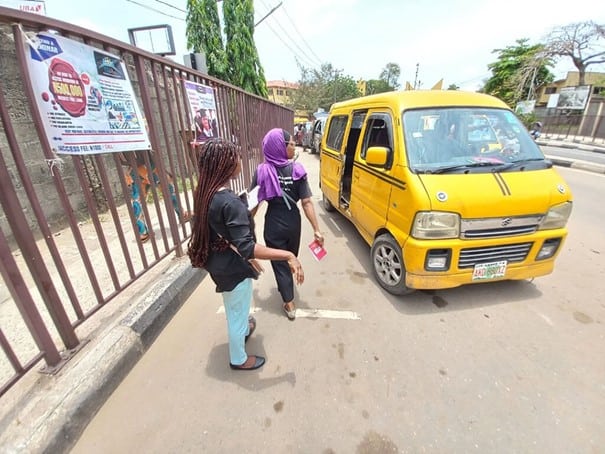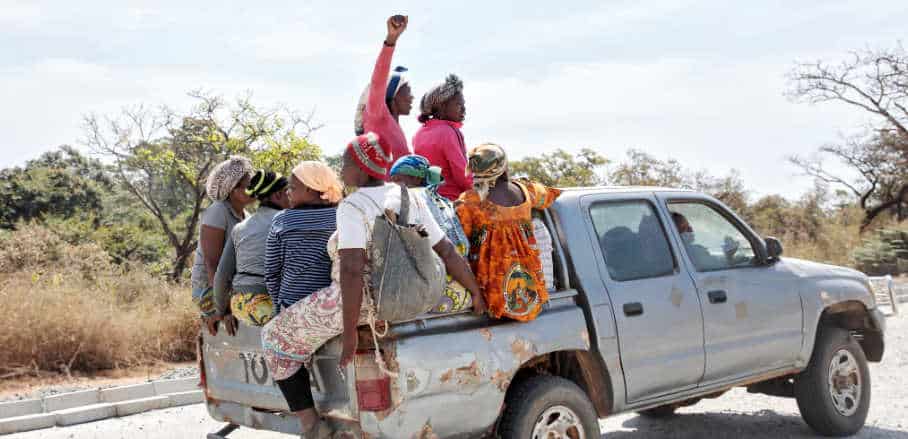The Power of Data – Making Transport Systems in Africa More Equitable
In Africa, gender-specific mobility needs are rarely considered in public transport due to a lack of data. Ariadne Baskin on the need to establish a more feminist transport system.
Africa is urbanising rapidly. Much of this growth – 70 to 100 per cent – is catered for by popular transport services which go by many local names – matatus, danfos, dala dalas, boda bodas, minibus taxis – and provide high coverage, high-frequency services at a low cost. Popular transportation is often the only service available and offers relatively short walking distances from origin to destination. Despite the necessity of these services, popular transit being out of government control has little to no regulation, contributing to shifting prices, lax safety, labour and environment laws and overly centralised and congested routes.
Women’s Neglected Mobility Needs
Like formal transport services, popular transit is often blind to the complex mobility needs of women which go beyond those of an able-bodied man. Women’s journeys are less linear and often involve more stops than a man, for instance, to drop children at school, check on elderly parents, or run household chores. Moreover, women rely more on pedestrian routes and they are more likely to use public transit during off-peak travel times. Women also have less access to private vehicles and are less likely to have a driver’s license than men. Lastly, women also report regular incidents of sexual harassment and assault on popular transit.

Ride-alongs: researchers accompanying women on their daily journeys, mapping their door-to-door travel and witnessing the obstacles they face while using transport © WIMT, 2022
Harnessing the potential of data and digital technologies can support cities in addressing this blind spot to adapt and plan their mobility services so that they address the intersectional realities of all.
Digital Tools and Data to Create More Inclusive Transport Systems
Despite the increasing numbers of women relying on public transport, gender-specific needs are rarely integrated into its design, planning, and operation. Transport planning has limited itself to designing transport services and systems on quantitative methodologies for decades. Revealing a more nuanced truth of women’s public transport experiences goes beyond the ‘aggregated percentage findings’ traditionally obtained through surveys and traffic counts.
Instead, user-centric, mixed-methods approaches are indispensable. Qualitative methods provide more granular insights into the varying decision-making stages of a woman’s commuting journey. Naturally, women are not a single homogeneous group and their needs and pain points vary greatly depending on their income levels, household structure, occupation, and age, among others.

Research lab: interactive women-only group sessions in which participants discussed their transport experiences © WIMT, 2022
In African cities, gender-equitable data is especially stark as popular transport services are provided privately and do not belong to the purview of public transport authorities. Many governments view popular transit as ‘chaotic’ and do not require operators and larger businesses to collect and share data. The data that does exist is often divided among a multitude of actors, is very heterogeneous and often inaccessible. Without data to visualise and analyse these dynamic systems, cities are making decisions that do not account for how the majority moves. These decisions are just based on assumptions of the standard male commuter.
Keeping Track of Transit Data With GTFS
Open data also creates an opportunity for technology companies, entrepreneurs, and researchers to provide transit users, operators, and authorities with new services. General Transit Feed Specification (GTFS) is the most common format used by transport authorities worldwide and provides a standardised and open format for organising transit data.
As GTFS was originally designed for more fixed, scheduled systems the flexible and demand-responsive nature of popular transit systems poses a challenge to the digital exchange format. Despite these challenges, a growing number of developing cities are collecting and opening their GTFS data to developers. Nairobi is one of the only cities in Africa to document and upload informal transit data. Digital Matatus collected data from Nairobi’s extensive matatu network (a system of privately owned minivans) through participatory digital mapping using smartphones to collect GPS data. Despite more and more African cities collecting transit data, there are little to no standardised approaches to ensure inclusivity.
Promoting inclusivity in popular transport systems starts with inclusive data collection that depicts diverse mobility needs, behaviours, coping strategies, and capabilities on an individual level. Robust intersectional, gender-equitable data goes beyond GPS cell data and surveys and is complemented by qualitative methods.
A Pioneering Data Collection Exercise in Three Major African Cities
To tackle this issue, TUMI worked together with WhereIsMyTransport (WIMT), a technology company gathering mobility and location data, in three major African cities – Nairobi, Kenya; Lagos, Nigeria; and Gauteng, South Africa – to undergo a comparative methodology that employed experiential and ethnographic research to unearth deeper insights on the motivations and decision-making of women using popular transport services. Over a five-month period, WIMT worked together with a network of local researchers to host several research activities: from surveys, focus-group discussions, and ride-along to journeys and women-only empathy map workshops.
The study provides evidence of what is missed when we don’t take the gender data gap into account with regard to evaluating and planning for gender-responsive mobility. This includes having a clear methodology of how data is collected, who participates, what types of data is collected, making equal space for qualitative, story and experience-based data, and, of course, how that data is analysed.
Take a deep dive into TUMI’s work in bridging the gender data gap in transport here.
